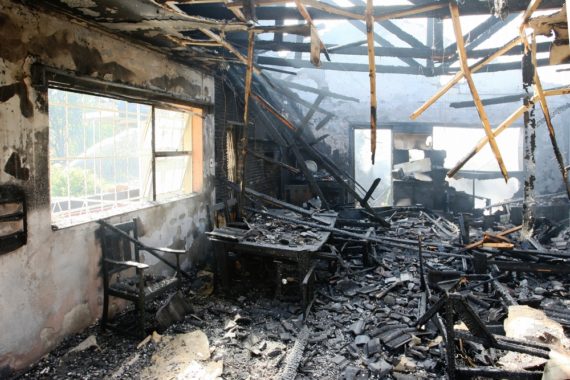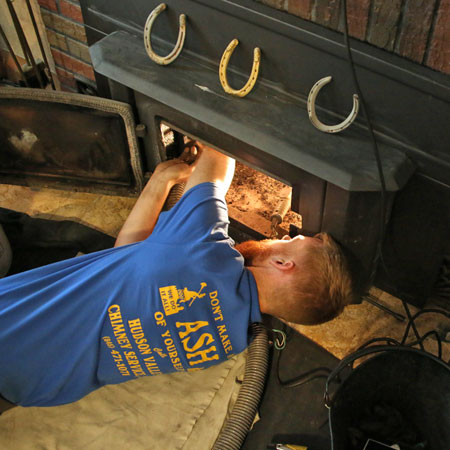Pyrolysis and Fireplaces: Understanding the Risks
 Do you know about the risk of pyrolysis?
Do you know about the risk of pyrolysis?
A fire at the home of Carolina Panthers’ coach Ron Rivera made national news in 2015. It is the most high-profile example of the dangers of pyrolysis. An improperly installed fireplace, that caused pyrolysis, was the culprit for this costly fire. Your home may be at risk too!
If you’ve never heard of pyrolysis, you aren’t alone. You can’t spot pyrolysis like you can with many other chimney risks including creosote or efflorescence. It is a chemical reaction that takes place inside wood and other organic materials. From the outside, the wood looks the same, but inside it has chemically decomposed. This process makes it more volatile or combustible.
Pyrolysis occurs when wood is exposed to high levels of heat over an extended period. Wood that’s been affected by pyrolysis can spontaneously ignite once it reaches 200° F without even coming in contact with flames. (Healthy wood will not combust until it reaches at least 400° F).
This is what caused Rivera’s home to catch fire. The fireplace in the master bedroom of his home had been installed without a base plate underneath it to protect the sub-flooring. On top of that, the fireplace had a hairline fracture along the base. This created the perfect condition for pyrolysis.
After using his fireplace constantly for a day, the sub-floor overheated and spontaneously ignited. Thankfully, no one was harmed in the fire, but it caused $500,000 in damage.
What Causes Pyrolysis
Many house fires are caused by pyrolysis every year that never make it in the news. There are two main causes of pyrolysis.
-
Improperly Installed Heating Appliances
An incorrectly installed fireplace, stove or furnace is likely to cause nearby wood trim, siding, or flooring to undergo pyrolysis. The National Fire Protection Agency has established minimum clearances for combustible materials, fireplaces and chimneys/fireplace ventilation to prevent this. If your heating appliance is installed correctly, you shouldn’t have to worry. Unfortunately, some contractors ignore these safety codes. Or, they cut corners by not installing necessary safety accessories like a heat-shielding baseplate underneath a fireplace. These improper installations increase the risk of a house fire in the future.
-
Cracked or Damaged Chimney Liners or Fireplaces
A cracked or damaged fireplace, chimney, or chimney liner can also cause pyrolysis. The temperature in a chimney can reach up to 1200°F. If this heat is able to escape inside your home, it can quickly cause nearby wood to undergo pyrolysis. A test conducted by the National Fire Protection Association discovered that it can take just 4 days for a 1/8-inch-thick fiberboard to be chemically decomposed by a wood stove and spontaneously ignite at just over 200°F.
How to Prevent Pyrolysis
 Since there aren’t any visible signs of pyrolysis, the only way to prevent it is to eliminate the causes. Chimney and fire safety experts agree that an annual inspection is the best protection against a house fire caused by pyrolysis.
Since there aren’t any visible signs of pyrolysis, the only way to prevent it is to eliminate the causes. Chimney and fire safety experts agree that an annual inspection is the best protection against a house fire caused by pyrolysis.
During a fireplace inspection, a CSIA certified chimney expert will make sure your heating appliance meets all safety codes and doesn’t have any cracks or damage.
If the fireplace, chimney or chimney lining is damaged, the best solution it to repair it before you use it again. This will prevent the wood around the heating appliance from undergoing pyrolysis.
If your fireplace hasn’t been inspected this year, give Hudson Valley Chimney Service a call! The CSIA Certified chimney experts on our team will ensure that your fireplace is safe to use.








